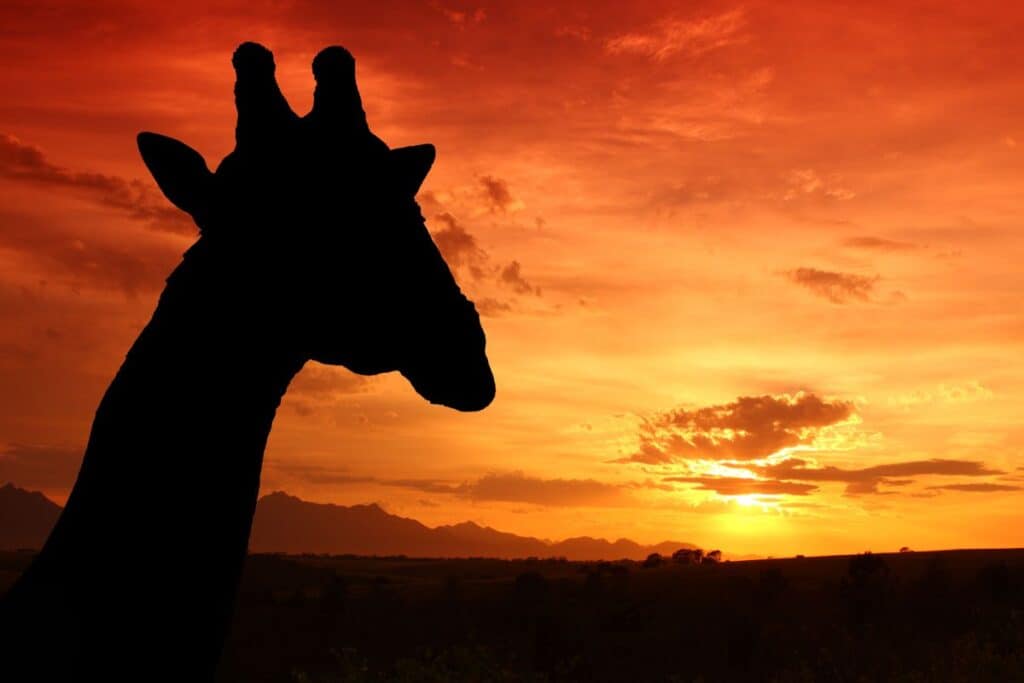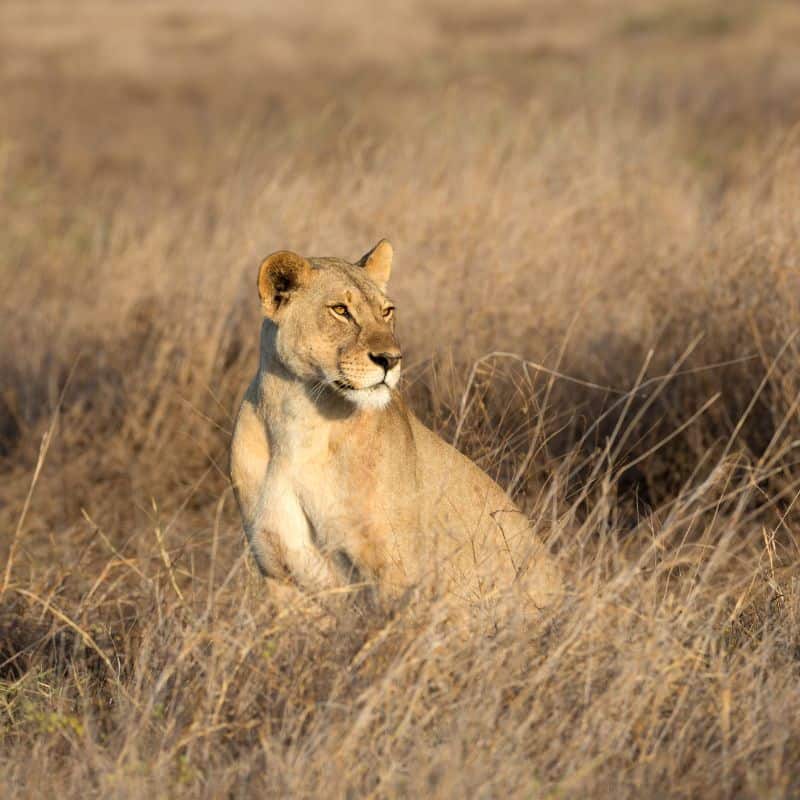Giraffes, with their towering necks and distinctive stripes, are a fan favorite at zoos and on safaris. However, how old do they get, and how long do giraffes live?
In the wild, giraffes can typically live for around 25 years. Giraffes in captivity, however, can live for up to 30 years. Male and female giraffes also tend to have the same lifespan.
In this article, we’ll look at the typical lifespan of giraffes, as well as some of the oldest surviving giraffes.

The average lifespan of a giraffe in the wild
Giraffes in the wild often only live to be 25 years old, but as there is no recorded evidence, this is only speculation. When they are in the wild, giraffes confront several dangers, such as lions, hyenas, and crocodiles.
Predators may have trouble capturing them due to their immense size and lengthy necks. Nonetheless, not even giraffes are impervious to risk. They are also vulnerable to human cruelty, malnutrition, and territorial conflicts with other giraffes.
The average lifespan of a giraffe in captivity
In the wild, giraffes often don’t make it beyond the age of 25, but with the right kind of care and safety, they may live much longer. Depending on the conditions, a giraffe in captivity may live for up to 30 years (occasionally even longer).
Captive giraffes sometimes suffer from a lack of space to roam, poor nutrition, and inadequate animal husbandry, despite the relative safety compared to the wild giraffe’s existence.
Life cycle of a giraffe

Pregnancy
It is very unusual for a giraffe to have more than one calf during a pregnancy, which lasts anywhere from 450 to 465 days.
Baby giraffes are already around 6 feet tall (1.8m) when born.
Infancy
Ossicones, the little bumps on a giraffe’s head that presumably aid in temperature regulation, stand up only a few days after birth.
A baby giraffe may spend its first three weeks hiding from anybody other than its mother; a task made much easier by the animal’s camouflaged skin pattern.
A male calf may stay with its mother for up to 15 months, of which as many as 12 months are spent weaning.
Maturation
Whereas all female giraffes tend to develop by four, males can take anywhere from four to five years.
It takes at least seven years for giraffes to start mating, even though a male giraffe’s body may begin producing sperm as early as three years of age.
In some wild populations, less than 50% of giraffes reach maturity.
Possible causes of death in giraffes
Standing up to 19 feet tall, it should come as no surprise that the leading cause of death in wild giraffe populations is being struck by lightning.
There are several other threats to giraffes, though, such as:
Predators
Giraffes are relatively secure from predators due to their height, good vision, and the tremendous kicking power of their legs.
Even lions have been known to chase giraffes, but never healthy mature giraffes. The giraffes can usually see dangers well before they become a problem.
The scarcity of giraffe predation may be due to the availability of more straightforward prey, such as zebras and wildebeests.

Caused by Humans
Humans have had the most significant effect on the giraffe population because of the way zoos have raised and cared for giraffes in captivity.
Throughout uncountable years, indigenous people have killed giraffes for their flesh, skin, bones, marrow, organs, and tail hairs, which have been used for everything from clothing and shelter to medicine and tools.
Deforestation in wild giraffe habitats is another critical threat to the species’ existence.
Hunting and killing
Poachers have not shied away from taking advantage of the giraffe despite the animal’s symbolic value to Africa and its role as Tanzania’s national animal.
The bushmeat trade is the primary reason giraffe populations have declined due to human activity; bushmeat is the term for animals whose flesh has been claimed for human consumption.
Illness
Oxpecker birds are relied upon by giraffes to deal with the ticks of the Hyalomma, Amblyomma, and Rhipicephalus genera that are often seen eating on giraffes, particularly around the weaker skin of the genitals.
The rinderpest virus, which previously plagued giraffes and caused many illnesses, has now been eradicated. Despite their distinctive mane, giraffes may develop sores, fissures, and wrinkles due to a skin condition caused by nematodes.
Some of the oldest recorded giraffes
As giraffes in captivity are much easier to record and track, some of the oldest known giraffes were held in captivity.
Here are some of the oldest giraffes we know about:
- The New South Wales giraffe Mutangi passed away after her 31st birthday in the Taronga Western Plains Zoo. She was the first giraffe to be born at that zoo in 1990, and now she was the great-grandmother of giraffes.
- Daphne, a resident of the Hogle Zoo in Utah, had a long and fruitful life. She had numerous offspring in the zoo until she passed away in 2016 at the age of 31. After her death, the zoo sent all the money they made from feeding the giraffes to the Giraffe Conservation Foundation since she was their main draw.
- Patches, a giraffe housed at Knoxville’s (Tennessee) Zoo, also died at the age of 31. She birthed approximately eight giraffes during her captivity, but she suffered from chronic arthritis. Patches the giraffe was the oldest reticulated giraffe in the USA.
- The oldest recorded giraffe was Rosie, who had to be euthanized in 1995 when she was an incredible 40 years old.
Final thoughts on how long giraffes live
The longevity of giraffes in the wild is still largely unknown, with most experts believing they live to a maximum age of 25.
In captivity, we know that they can live for quite a lot longer. The oldest recorded giraffe was 40, but most only make it to around 30 years old.
The main threat to giraffes is humans, whether through hunting, habitat loss, or the bushmeat trade.
If we want to ensure that these majestic creatures are around for years to come, we need to do our part to protect them.
